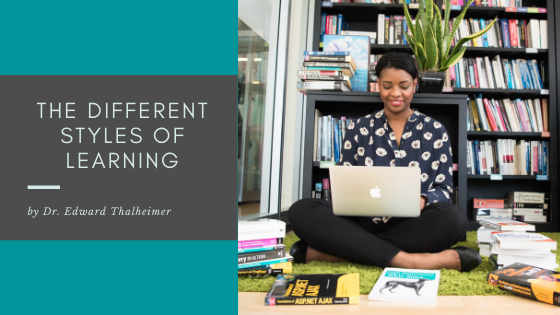You may have heard multiple times that different people respond the best to a particular type of learning, though you may not necessarily know what that means. Essentially, the different types of learning encapsulate a specific strength that can help someone retain knowledge better. What may work for one child may not work for others, so it’s important to know how to accommodate the different types of learning.
Visual
Visual learners will retain the information that they learn the best when connected to a picture or an image that reminds them of the word or phrase they’re trying to remember. They also respond incredibly well to colors and mind maps. If a child is struggling with work, allow them to draw pictures that can help them retain the information.
Auditory
Auditory learners learn best when presented with the information during a vocal lesson. Collaboration through asking questions and talking through subjects also helps immensely. Reading aloud can also help these learners process information. Allowing children to participate in the tutoring lesson rather than taking notes actively could be a better way for them to retain information. These kids like to read aloud, they may read slower, and you may find that these children will repeat things back to you. Something you could do while tutoring is to ask an auditory learner to explain a concept that you just went over and ask follow-up questions to keep them engaged.
Reading & Writing
Children that excel with the reading and writing learning style focus best on the written word. Whether that’s taking notes or working on worksheets or other text-heavy assignments, allow your kids to reference written text. These learners take elaborate notes, are good at researching, and can often find things out by themselves. Showing kids how to research correctly and showing them how to put it in an essay is incredibly helpful. However, you should be giving students enough time to take notes.
Kinesthetic
This learning style is a particularly active one. Kinesthetic learners excel when hands-on presentations thrive when their senses are stimulated during coursework. These kids may find that they particularly enjoy and excel at scientific research because of the heavy hands-on components in working. If you’re looking to include kinesthetic learning in other subjects, the easiest thing to do is get kids up and move. You could also create study games to get children actively participating in the lesson.
Every child learns differently, and it’s our job as the tutor to know how to accommodate each learning style. Whether your students are visual, auditory, reading, and writing, or kinesthetic learners, there are myriad ways that you can incorporate all the learning styles into your lessons.
Dr. Edward S. Thalheimer is the President and Founder of The Tutoring Franchise Corp. For our part, we here at The Tutoring Center® are continuing to provide one-to-one instruction combined with The Rotational Approach to Learning® to prevent children from slipping through the cracks academically. Our programs help children achieve long-term success, build concentration and focus, and, with our outstanding instructors, find the love of learning. Don’t let your child fall behind this school year. If you’re interested in learning more, visit our website at TutoringCenter.com.
